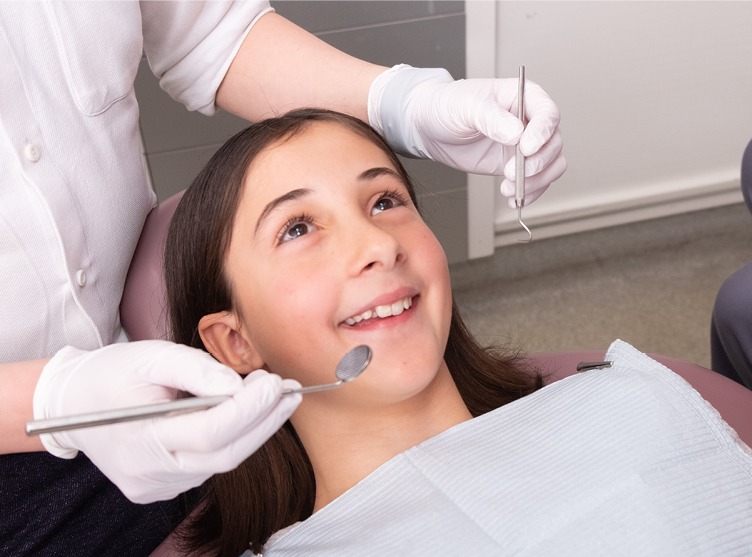The smart Trick of Legacy Orthodontics That Nobody is Talking About
An orthodontist is a dental professional trained to identify, avoid, and treat teeth and jaw irregularities. They deal with existing problems and are trained to identify troubles that might establish in the future. Orthodontists collaborate with individuals of any ages, from children to grownups. People typically associate an ideal smile with health.
Malocclusion, or misaligned teeth, can result in dental problems, including dental cavity, gum tissue illness, and challenging or uncomfortable chewing. Not every person is birthed with straight teeth. If you have a poor bite or large rooms between your teeth, you might want to speak with a dental professional specializing in orthodontic treatment.
About Legacy Orthodontics
( Picture Credit Score: DigitalVision/Getty Images) Orthodontists use fixed and removable oral tools, like braces, retainers, and bands, to alter the setting of teeth in your mouth. Orthodontic therapy is for oral abnormalities, consisting of: Crooked teethBite issues, like an overbite or an underbiteCrowded teeth or teeth that are also much apartJaw misalignmentThe objective of orthodontic therapy is to improve your bite.
A healthy bite ensures you can eat, eat, and talk effectively. While you might believe of orthodontists as mostly for kids or young adults who require dental braces, they can correct dental issues at any kind of age. Orthodontists participate in college, oral institution, and orthodontic college. After college graduation, they invest 2 or 3 years in an orthodontic residency program.
All orthodontists are dental professionals, yet not all dentists are orthodontists. Orthodontic residency programs use intensive, concentrated direction for oral specialists. They focus on 2 locations: How to correctly and securely move teeth Just how to properly guide growth in the teeth, jaw, and faceOnce an orthodontist has finished training, they have the option to become board licensed.
Not known Incorrect Statements About Legacy Orthodontics
Malocclusion leads to tooth congestion, a misshapen jaw, or irregular bite patterns. Malocclusion is generally treated with: Your orthodontist attaches metal, ceramic, or plastic square bonds to your teeth.
If you have just minor malocclusion, you might have the ability to utilize clear dental braces, called aligners, as opposed to traditional braces (https://www.sooperarticles.com/authors/788744/brian-mccune.html). Some people need a headgear to aid relocate teeth right into line with pressure from outside the mouth. After dental braces or aligners, you'll need to wear a retainer. A retainer is a custom device that keeps your teeth in area.
They're frequently utilized on kids. They can produce added room in the mouth without needing to pull teeth. If you have a serious underbite or overbite, you might require orthognathic surgery (also called orthodontic surgical procedure) to extend or shorten your jaw. Orthodontists use wires, surgical screws, or plates to sustain your jaw bone.
You may require to see an orthodontist if you have: Crowding or otherwise enough room for every one of your teethOverbite, when your upper teeth come by your bottom teethUnderbite, when your base teeth are as well much forwardSpacing or problems with gapsCrossbite, which is when your top teeth fit behind your base teeth when your mouth is closedOpen bite or an upright void in between your front bottom and upper teethMisplaced midline, when the center of your bottom and upper teeth do not align Fixing a dental malocclusion can: Make attacking, eating, and speaking easierImprove the balance of our face and your overall appearanceEase discomfort from temporomandibular joint disordersDifferent your teeth and make them much easier to clean up, helping protect against dental caries or tooth cavities It's often a dental practitioner who initially notifications misaligned teeth during a regular examination.
4 Simple Techniques For Legacy Orthodontics

Throughout your very first orthodontic examination, you'll likely have: An oral examPhotos taken of your face and smileDental X-raysPanoramic (360 degree) X-rays of your face and headImpressions to develop molds of your teethThese examinations will aid your orthodontist know just how to proceed with your treatment. braces. An orthodontist is a dental practitioner who's had training to treat your teeth and jaw
Orthodontists may perform surgical procedure, exams,X-rays,and even more to help you acquire a more comfy, healthier smile. An orthodontist is concentrated on your bite, so something like a cracked tooth would certainly be handled by a dental expert. Orthodontists are dental experts but not all dental experts are orthodontists. Orthodontists are concentrated on your bite, or the means your teeth fit together, and the straightness of your teeth.
Ever wondered just how celebrities always appear to have perfectly straightened teeth? The response frequently hinges on the competent hands of an orthodontist. However just what does an orthodontist do? Orthodontists are dental Recommended Site professionals that concentrate on fixing irregularities in the teeth and jaws. Their proficiency exceeds simply creating a lovely smile; it encompasses enhancing your overall oral health and function.
Legacy Orthodontics Can Be Fun For Everyone

While dental braces are one of the most typically recognized orthodontic therapy, orthodontists have a diverse toolkit at their disposal. The certain technique picked depends on the severity of the situation, the client's age, and specific preferences. These reliable braces utilize a system of braces adhered to the teeth and attached by wires.
These removable trays are personalized to progressively shift the teeth's placement. In situations of slim jaws, palatal expanders can be made use of to develop room for proper tooth alignment.
Comments on “What Does Legacy Orthodontics Do?”